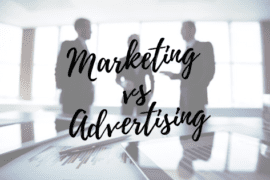Understanding an organization’s marketing environment is perhaps the most effective way to build long lasting customer relationships. Marketing managers are appointed the task to mold company policies according to the shifting environment.
Table of Contents
What Is a Marketing Environment
Marketing environment deals with the variables or influences of the internal and external environment of an organization. These factors collectively affect the company’s ability to cultivate and maintain strong customer relationships.
Marketing Environment Explained
The marketing environment comprises of two important components. This includes the internal environment and external environment.
Internal Marketing Environment
The internal environment of a firm constitutes of all those factors inside a firm that’ll impact its marketing operations. Some common factors include capital assets, company policies, employees, organizational structure along with its goods and services.
All these factors are under the control of the firm. Experts like to group these factors under the Five M’s of business:
- Money
- Men
- Materials
- Machinery
- Markets
Since the internal environment falls directly under the control of the marketer, it can be changed without altering the external environment.
Example
Your internal office culture that comprises of values and attitudes determines how your employees behave. If an organization emphasizes on teamwork and collaboration opportunities then it is likely to perform better compared to its competitors.
External Marketing Environment
The external environment is made up of factors that cannot be controlled by a firm. However, these factors may heavily influence the motives of marketers while formulating a marketing strategy.
External marketing factors can be categorized into two categories including micro environment factors and macro environment factors.
Micro Environment
Micro environment factors deal with external components that are directly linked to the organization. These factors include the customers, competitors, partners and of course the public. Here are a few important entities that make up an organization’s microenvironment:
- Partners: This includes units and separate entities such as market research organization, advertising agencies, brokers, transportation companies etc.
- Employees: Skilled and competent employees help an organization grow and boost sales.
- Suppliers: Businesses are dependent on their suppliers to deliver goods. They serve as the primary factor when it comes to presenting the finished product.
- Customers: The success of the company will undoubtedly depend on its customers. Determining the nature of customers allow marketers to devise appropriate marketing strategies.
- Public: It’s the primary duty of an organization to cater to the needs of the public. After, it’s the customers and buyers that hold the power to shift the company towards betterment.
Examples
Employees may alter the business environment to a certain extent. Employees that lack motivation or simply aren’t skilled enough may impact sales and will be least interested in making any progress.
Similarly, if the supplier increases the costs of raw material, this may have an impact on the marketing mix strategy of the company. To avoid such instances from happening, companies should focus on establishing a strong relationship with their suppliers to get an edge over their competitors.
Macro Environment
The macro environment focuses on external factors that influence the industry as a whole. In other words, these factors don’t directly influence the business. Some important components of macro environment include:
- Demographics: Demographic elements influence different market segments including country, region, age, lifestyle etc.
- Economic factors: The decision making processes and organization production of customers are influenced by economic factors such as inflation and so on.
- Social cultural factors: Marketers must consider the social and cultural outcomes of their products and services. This is why organizations should ensure their products and services are environmentally friendly.
- Technological factors: The organization should focus on the technology and materials used for creating goods and services. This is particularly important for effective business processes.
Marketers can also follow a PESTEL approach to explore external factors that indirectly affect an organization. This approach comes in handy for identifying major opportunities and threats that your business might face in the future.
Examples
Examples of macro environment influences include changes in cultural tastes, government regulations, competitors, disastrous weather and changes in interest rates.
Did you enjoy reading our blog post about marketing environment? Check out our other marketing resources for more information.






